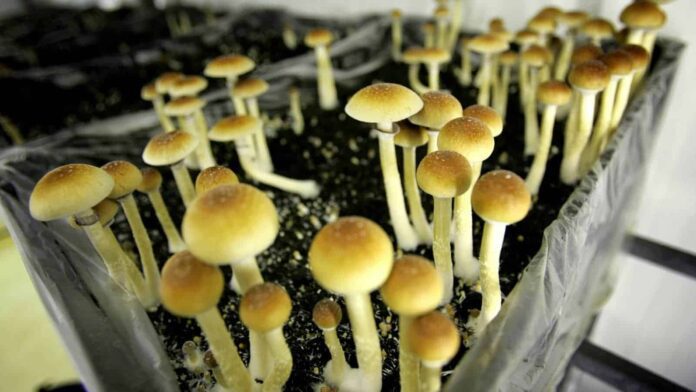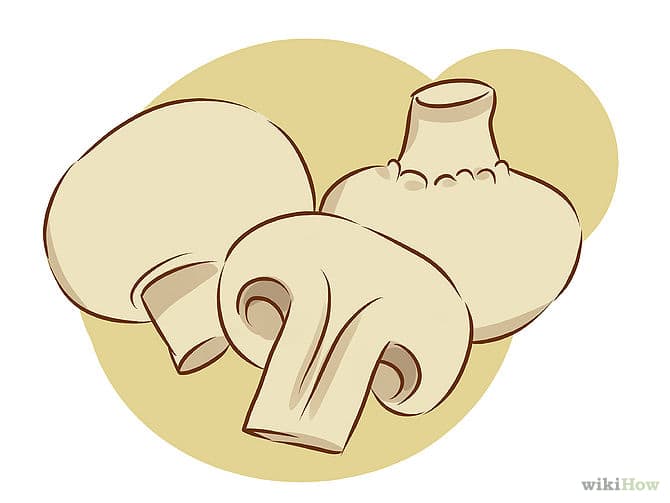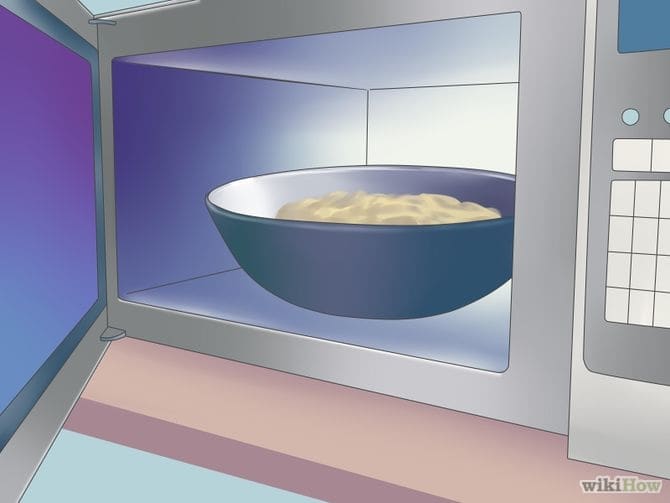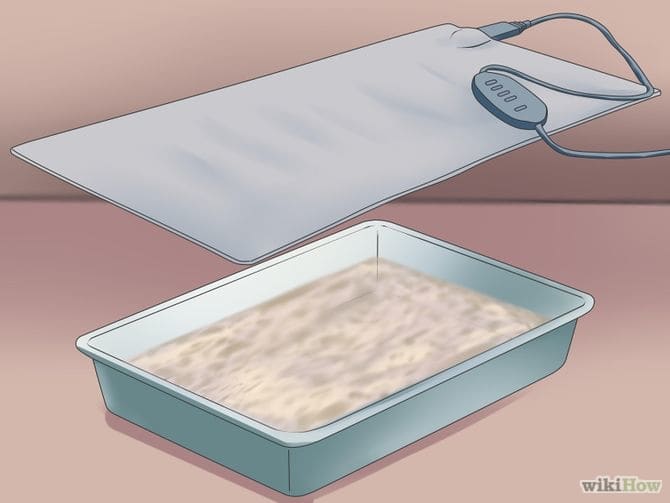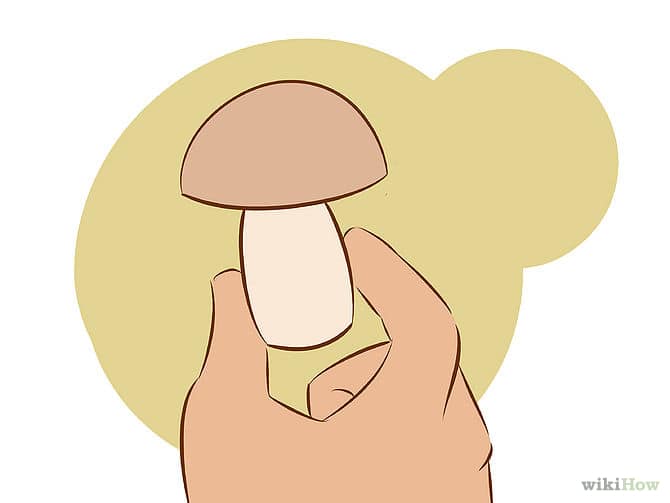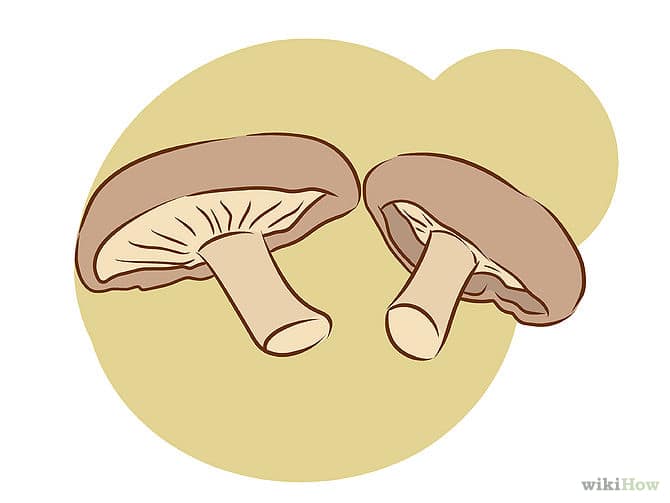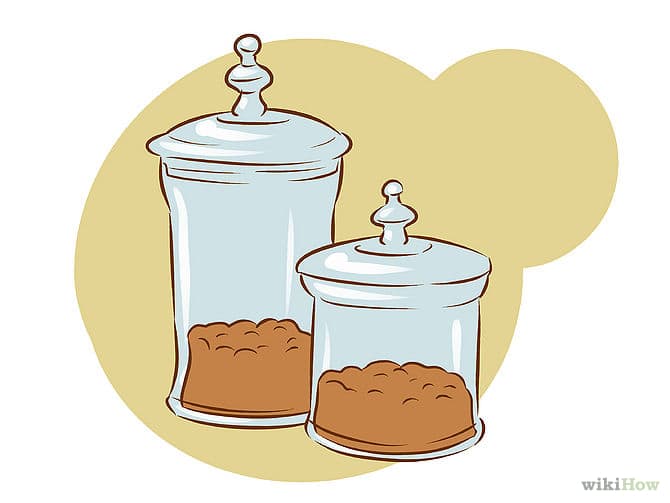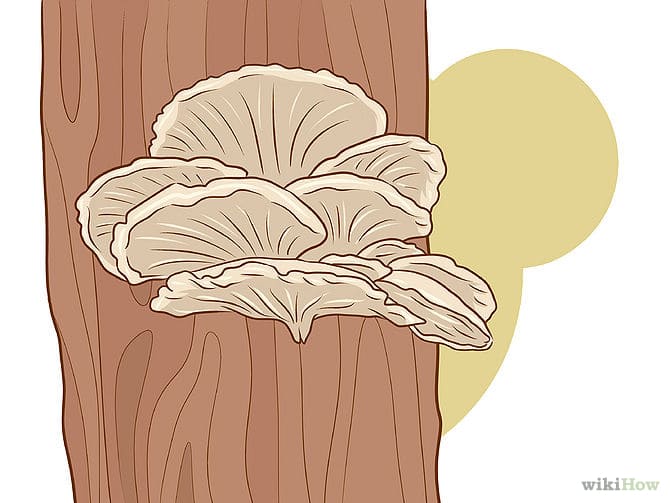Growing mushrooms at home is a task that any gardener interested in growing their own food should attempt. Mushrooms are a healthy addition to any diet, as they are low in calories and fat, high in fiber, and contain high amounts of potassium. In addition, they are very easy to grow at home. Mushrooms are best grown indoors where the temperature and light conditions can be more readily managed. Learning how to grow mushrooms indoors is a matter of managing their growing conditions carefully.
Part 1 of 2: Basic Growing Method
1. Decide what type of mushroom you want to grow. The 3 types of mushrooms that are easiest to grow at home are oyster, white button, and Shiitake. The method for growing each mushroom is similar, but the ideal growing medium differs.
- Oyster mushrooms grow best in straw; Shiitakes grow best on hardwood sawdust; button mushrooms grow best in composted manure. These different growing media reflect the different nutritional needs of each species. However, each of these 3 species can be grown readily enough in sawdust or straw.
- Choosing a type of mushroom to grow is a matter of taste. You should grow the type you most want to eat.
2. Purchase mushroom spawn. Mushroom spawn is sawdust permeated with mushroom mycelia – essentially the root structure of the fungus. It is used much like plant seedlings to facilitate growth.
- You can purchase high-quality mushroom spawn from several online retailers, some gardening supply stores, or some specialty organic living stores.
- Make sure to buy spawn rather than spores. Some retailers will also sell spores, which are more akin to the seeds of plants (rather than seedlings). Growing mushrooms from spores takes more time and practice, and is best suited for a seasoned mushroom grower.
- We recommend Shayana Shop.
3. Sterilize the growing medium. If you are growing mushrooms in straw or sawdust, it will necessary to sterilize these growing mediums before inoculating with the spawn. This is done to kill off any micro-organisms that could compete with the mycelia.
- To sterilize the growing medium, place it in a microwave safe bowl and add enough water to make the straw or sawdust damp. Place the bowl in the microwave and heat on high for two minutes, or until the water has boiled off.
- This kills off any microorganisms, leaving the growing medium safe to receive the mushroom mycelia. You may need to work in batches in order to sterilize all of the straw or sawdust.
4. Heat the growing medium so that the mycelia will spread. The mycelia in your mushroom spawn need to spread into the growing medium thoroughly before producing mushrooms. A warm temperature encourages this growth.
- After choosing the growing medium suited for your mushroom species, place a few handfuls of it into a baking pan. A shallow pan with a large surface area will provide the most room for your mushrooms to grow.
- Mix the spawn into the growing medium with your fingers. Place the baking pan on a heating pad set to 70 degrees Fahrenheit (21 degrees Celsius). This is the ideal temperature to encourage growth.
- Leave the setup in a dark environment, such as a cabinet, for about 3 weeks. This will allow the mushroom mycelia to permeate the growing medium.
5. Place the growing medium into the proper environment. After 3 weeks, you need to place the pan into an environment that is dark and cool (about 55 degrees Fahrenheit / 13 degrees Celsius). A basement usually works well for this, but a cabinet or drawer in an unheated room will work in winter.
- Cover the growing medium with a handful of potting soil and spray the entire mixture with enough water to dampen it thoroughly. You can place a damp towel over the pan to prevent moisture loss if desired.
- The mix should be kept moist and cool as the mushrooms grow. Check it periodically and spray it with water as necessary.
6. Harvest your mushrooms when they are fully grown. In about 3 weeks, you should see small mushrooms appearing. Continue to keep their environment moist, cool, and dark to encourage their growth.
- When the mushroom caps separate fully from their stems, they are ready to harvest. You can pluck the mushrooms out with your fingers, but this risks damaging the newly developing fungi beneath the surface. Instead, use a sharp knife to cut the mushrooms at the base of the stem.
- It is best to rinse the mushrooms before cooking or eating. You can store harvested mushrooms in a paper bag in the refrigerator for up to a week.
Part 2 of 2: Alternative Growing Methods
1. Grow mushrooms from a kit. For first-time growers, growing mushrooms from a ready-made kit can be a fun, easy option for producing your own mushrooms. These kits usually consist of plastic bags filled with sterilized, inoculated straw or soil. All you need to do keep the bag in the correct conditions and in seven to ten days you’ll have homegrown mushrooms.
- Kits will usually cost between $20 and $30 and can be used to grow most of the common mushroom varieties such as white button, crimini, portobello, lion’s mane, shiitake, and oyster mushrooms.
- To begin the growing process, simply open the bag and place it in a bright location, out of direct sunlight — such as a shade windowsill. The kit can be kept at room temperature, but it will need to be misted with water daily to keep humidity high. Some kits will provide plastic tents to cover the bag and maintain humidity levels.
- The mushrooms will start to sprout after seven to ten days, but you can expect to see two or three flushes of growth over a three month period.
- The great thing about these kits is that after they have finished producing mushrooms, you can bury them outdoors under bark mulch or in your compost pile. Then, depending on weather conditions, mushrooms may start to pop up in that spot.
- Visit Shayana Shop for Magic Mushroom Grow Kits
2. Grow mushrooms from coffee grinds. Growing mushrooms from coffee grounds is a fun project which helps to use up coffee grounds that would otherwise go to waste. Coffee grounds are a fantastic growing medium for mushrooms (oyster mushrooms in particular) as they are already sterilized thanks to the coffee brewing process and are full of nutrients.
- For 500 g (17.6 oz) of mushroom spawn, you will need 2.5 kg (88 oz) of fresh coffee grounds. The best way to get this amount of fresh coffee grounds (brewed that day) is to go to a cafe and ask nicely. They’re usually more than happy to give it away.
- Next you’ll need a container for growing your mushrooms — the best thing to use is a filter patch grow bag, which can usually be purchased along with the mushroom spawn. If not, you can use a large, sealable freezer bag or a well-cleaned milk carton or ice cream tub, with 4 small holes poked into the sides.
- Wash your hands thoroughly with anti-bacterial soap, then mix the mushroom spawn into the coffee grounds, breaking them up with your hands to ensure that they are evenly distributed. Place the inoculated coffee grinds into the plastic bag or container and seal tightly.
- Place the bag or container in a warm, dark location, somewhere between 64 and 77 degrees F (18 to 25 degrees C), like in an airing cupboard or under the sink. Leave it here for approximately three weeks, until it turns entirely white — this due to the mycelia colonizing the coffee grinds.
- Once the bag or container’s contents have turned completely white, move it to a bright but shaded area and cut a 2″ by 2″ hole at the top. Mist the contents of the container with water twice daily to prevent it from drying out — the mushrooms won’t grow in too-dry conditions.
- Over the next five to seven days, tiny mushrooms will begin to sprout. Continue to mist them with water and they should double in size each day. When the cups of the mushrooms have started to turn slightly upwards, they are ready to harvest.
- When the mushrooms have stopped sprouting, plant the coffee grinds outdoors under bark mulch or compost and new mushrooms may develop, depending on the weather.
3. Grow mushrooms on a log. Another interesting way to grow certain species of mushrooms — such as Reishi, Maitake, Lion’s Mane, Shiitake, Pearl and Phoenix Oyster — is from a log. This is done by inoculating hardwood logs with birch plugs that have been fully colonized by mushroom mycelium. These plugs are available online and from specialist mushroom spore suppliers.
- The first thing you need to do is find an appropriate log for mushroom growing. The logs should be cut from non-aromatic hardwood trees, such as maple, poplar, oak and elm. They should be 3 or 4 feet (0.9 or 1.2 m) in length and no more than 14″ in diameter. The logs should be cut at least two weeks before plugging, to allow the tree’s naturally-formed anti-fungal properties to degrade.
- To colonize a 3 to 4 foot (0.9 to 1.2 m) log, you will need approximately 50 plugs. To insert the plugs, use a 5/16″ drill bit to make 2″ deep holes in a diamond pattern over the entire log. The holes should be spaced about 4″ apart. Place the birch plugs into the holes and tap with a hammer to insert fully.
- If you plan on leaving the logs outdoors you may need to seal the holes with cheese wax or beeswax to protect the plugs from insects and harsh weather. If you plan on keeping the log indoors, in a garage or basement, this usually isn’t necessary.
- Over time, the mushroom mycelium will spread from the birch plugs throughout the log, until the entire piece of wood has been colonized. Once fully colonized, mushrooms will begin to sprout from cracks in the log. This typically takes between 9 to 12 months, but depending on temperature and humidity conditions, the mushrooms should return year after year.
Things You’ll Need:
- Mushroom spawn
- Sawdust, straw, or manure
- Baking pan
- Heating pad
- Potting soil
- Spray bottle
- Water
- Towel
For more information on growing mushrooms, indoors and outdoors, see this article.
